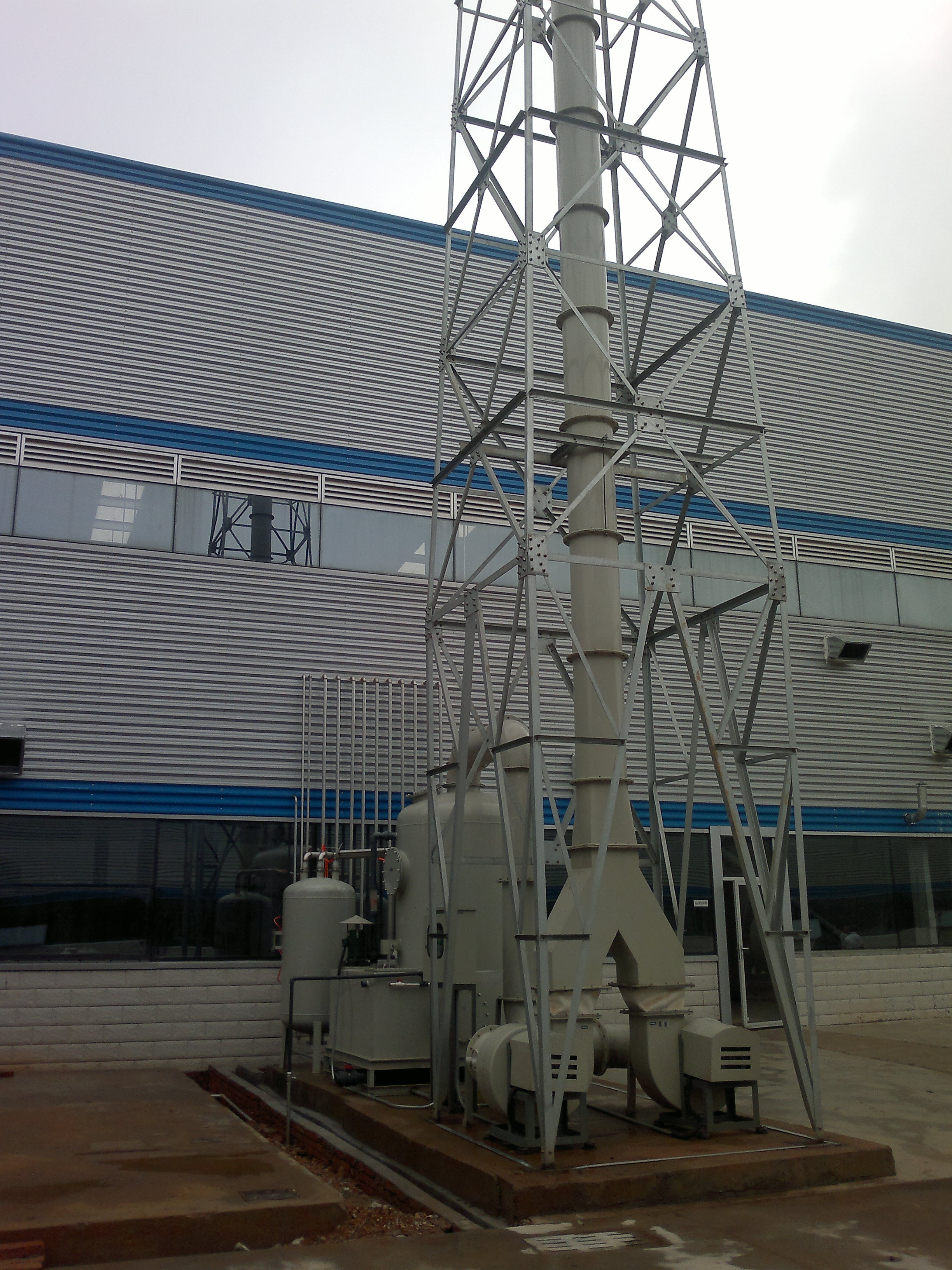In industries such as solar cell manufacturing and chemical vapor deposition (CVD) processes, silane (SiH?) is widely used due to its reactive properties. However, silane is also highly flammable and potentially explosive upon contact with air, which makes its exhaust gas handling a critical safety concern.
To address this, the silane combustion tower plays an essential role in safely neutralizing silane, ammonia, and other soluble gases released during production. At Chaori Purification, our stainless steel silane combustion towers are engineered for high purification efficiency, operational reliability, and enhanced safety performance.

The silane off-gas, when discharged from a production process, is routed through dedicated pipelines into the stainless steel combustion tower. Upon contact with ambient air inside the unit, silane spontaneously combusts.
The exhaust gas is then subjected to a dual-stage spray scrubbing system, where it reacts thoroughly with circulating liquid. This reaction neutralizes harmful components, and the treated gas is finally discharged safely through an extraction fan system.
Key stages in the process:
Spontaneous combustion of silane: upon exposure to air
Double spray towers :enhance gas-liquid contact and absorption
Recirculating water pumps: maintain stable scrubbing performance
Draft fans :extract and safely release the purified air
To ensure safe and efficient operation of a silane combustion purification system, the following points must be carefully observed:
1.Maintain Proper Negative PressureThe tower should operate under a controlled negative pressure environment—typically around -200 Pa—to prevent backflow and gas leakage.
2. Emergency Combustion Tube Is Required
Install an emergency combustion stack after the vacuum pump. This acts as a secondary combustion safeguard in case of system overload or silane spike.
3. Use Dual-Fan Configuration
Always adopt a dual-fan setup: one fan in active use and one on standby. This redundancy ensures uninterrupted operation and system resilience.
4. Include Airflow Regulation Valves
A manual or automatic regulating valve must be installed in the silane line to precisely control gas flow rates and maintain combustion stability.
5. Enable Fan–Damper Interlock
The electronic air inlet damper must be linked with the fan’s operational status. This ensures synchronized airflow control and avoids accidental surges or system imbalance.
Jiangsu Chaori Environmental Protection Equipment Co., Ltd. offers comprehensive solutions for VOCs, silane, and hazardous exhaust treatment. Our team provides not only advanced purification systems but also full-cycle technical support—from system design to on-site commissioning and maintenance.